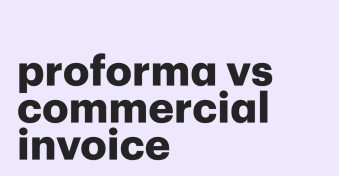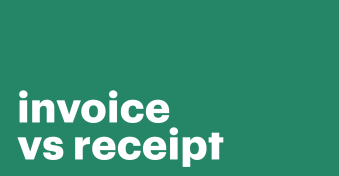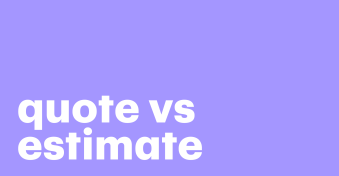Invoice vs quote. Crucial tools for ensuring that a business gets paid, but they’re not the same thing.
Quotes are the first step in the journey toward payment, telling your customers how much your services or products will cost, while invoices are documents that customers receive when you’ve provided those services or products.
As they’re so closely intertwined and easily mixed up, we will take a closer look at the difference between an invoice and a quote and explore how to create them.
Key takeaways
- Invoices are used after the services or products are delivered.
- Quotes are used to predict costs for customers.
- Both invoices and quotes need detailed breakdowns of costs and expenses.
- Use PandaDoc software to improve the processing and production of invoices and quotes.
What is the difference between quote and invoice
There are a few key differences between quote vs invoice, despite them being integral parts of the same buying process.
Here are the main things that will help you tell them apart:
| Quotes | Invoices |
|---|---|
| Before the job: Quotes are always provided to the customer before you’ve started to complete the work. | After the job: Invoices are delivered once the customer has received the product or you’ve finished providing a service. |
| Estimations: When it comes to the content of a quote, you must include estimated costs based on a detailed breakdown of the services and materials you’ll be using. | Actual costs: As invoices are made once the work has been completed, the content of an invoice will include the actual costs you’ve incurred. |
| Persuading the customer: As quotes come before the customer has agreed to a job, you’ll need to consider how to persuade them to complete the transaction. Make it persuasive and ensure your prices are competitive. | Requesting a payment: Invoices aren’t about persuading the customer as it’s simply a legal document that enables you to receive a payment from the customer. However, you should remember things like customer retention when constructing an invoice. |
Is a quote the same as an invoice
As we’ve seen, a quote isn’t the same as an invoice.
Instead, you should think of them as two sides of the same coin–they’re both needed to ensure that a transaction is possible between you and a customer, but they’re distinguishable.
Let’s explore and compare them one by one.
What is an invoice
When you’re trying to work out the differences between an invoice vs quote, a sensible place to start is by asking what is an invoice?
An invoice is a bill that tells your customers how much they have to pay you.
They’re a formal document of your request for payment after you’ve completed work or delivered a product to a customer.
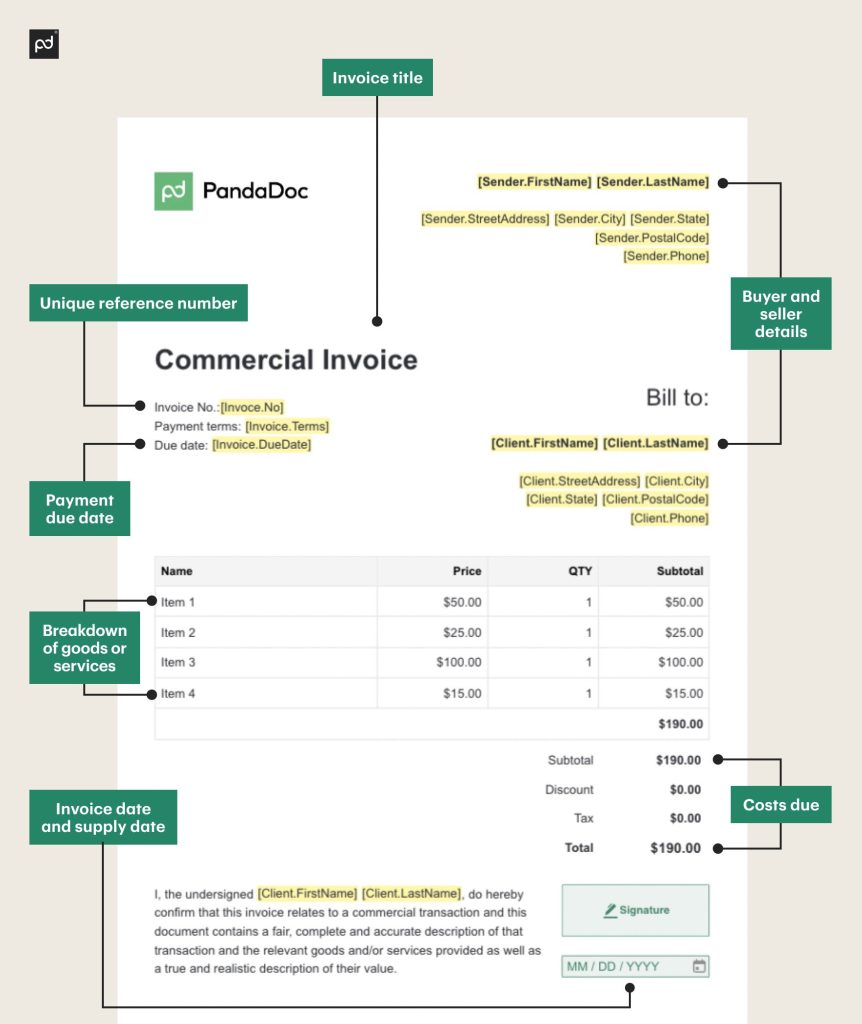
What is an invoice used for
Invoices are mainly used for two things. Firstly, they’re used for accounting purposes.
You can stay on top of your finances by using an invoice every time you request a financial transaction.
This benefits both the seller–as you’ll have a clear picture of your incoming cash flow–and the buyer, who will know exactly how much they need to pay and when that payment was requested.
This means that invoices are a great tool for keeping track of finances.
Secondly, invoices are used to ensure that sellers receive payment.
The business world is often fast-paced and hectic, so it’s easy for buyers to overlook payments if they’re not organized or requested by the seller.
So, using an invoice gives the buyer an obvious reminder to schedule a payment.
The best invoices also include instructions about how to make that payment, which makes it easier for businesses to receive what they’re owed.
When is an invoice used
As invoices are a way of receiving payment for a completed order, they can only be used after that order has been fulfilled.
If you want to speed up the invoice process, you might want to prepare your invoices in advance–just remember to only send them once the buyer has received what they’re paying for.
Although you can only send them after the order has been completed, to avoid invoice issues with clients, you shouldn’t wait too long.
Customers don’t like receiving invoices for work that took place a long time ago.
Also, having a speedy invoice process will ensure that your cash flow is more efficient, as you’ll receive payments more quickly.
What is a quote
Now that you know what an invoice is, what is a quote?
A quote is a preliminary document that explains the cost of a job or product before the customer accepts that price and completes the purchase.
Sometimes, people think that a quote is an estimation of the price of a job. While that’s partially accurate, quotes are more than just an estimation.
That’s because quotes can be a formal document that will become an agreed price if the customer accepts it.
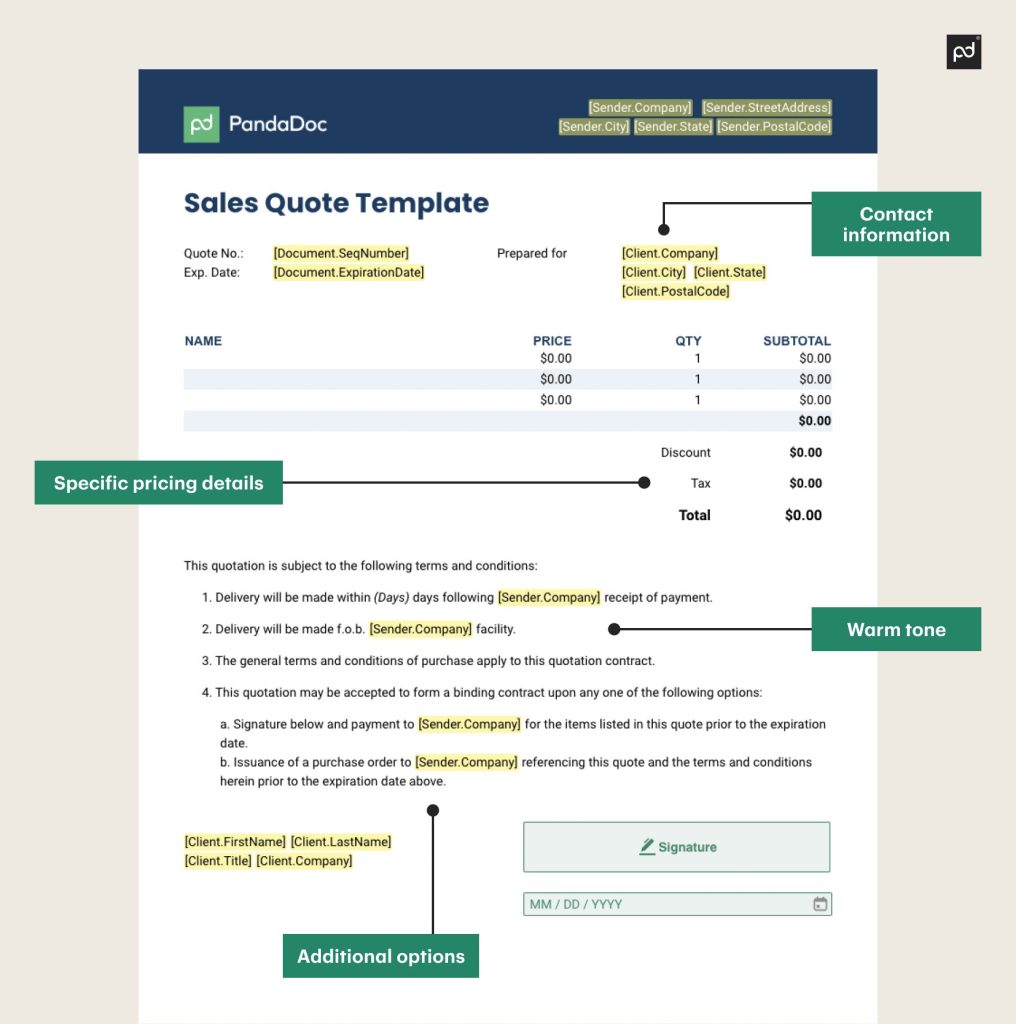
What is a quote used for
Quotes tell the customer how much a service or product will cost.
However, quotes can be used for two slightly different functions.
- Estimates: Some services–such as a construction job–can include variable costs. This means customers like having an estimated price before agreeing to a job. Estimate quotes aren’t legally binding and are used as the first step in a proposal.
- Fixed price quotes: Although estimates are sometimes necessary, many jobs don’t need to account for price variability. This means that most quotes are used to provide a fixed price to your prospective buyers, allowing them to see things such as deadlines and labor costs before agreeing to a job.
When is a quote used
Quotes are always used before you’ve started to provide a service to the customer or before starting to complete an order.
They’re usually requested by the customer, and it’s good to provide a quote as quickly as possible.
Different types of invoices
Although all invoices are used to request a payment once a job has been completed, they can differ depending on their exact purpose.
This means it’s essential to know which category you need when looking for invoice templates.
Here are the three main types of invoices:
Final invoices
This is probably the most common type of invoice.
They break down the overall cost of a project, allowing customers to send payment for any incurred expenses.
This means they’re a crucial part of delivering the agreed price to the seller.
Interim invoices
In longer jobs, interim invoices might be used.
This is useful when a project is broken down into separate phases, each with costs.
You’ll use an interim invoice at the end of each phase, allowing you to monitor your budget better and reduce your exposure to risk by ensuring that you receive interim payments.
Pro forma invoices
A pro forma invoice is a document sent ahead of the final invoice.
They’re used to allow customers to see the price of the project, as well as the breakdown of those costs, without being legally binding.
What’s included in an invoice
When you’re producing an invoice, you’ll need to include the necessary information below.
- Invoice title: Always make it clear that the document is an invoice by including a marked title or header.
- Unique reference number: Accounting can be a complex and difficult job. To allow accountants to manage invoices more easily, include a unique reference number that allows them to track and monitor each invoice.
- Buyer and seller details: As is the case for any legal document, you should include key details about the parties. This means writing names, addresses, and contact details in the invoice.
- Breakdown of goods or services: To allow the buyer to understand the costs, you should include a detailed breakdown of the reasons for those costs, including things such as labor costs or delivery charges.
- Invoice date and supply date: Always include key dates in your invoice to assist with record-keeping. This includes the date on which the invoice was created, as well as the dates when the job was provided.
- Costs due: It might seem obvious, but don’t forget to include the total costs in your invoice. You’ll need to consider taxes and discounts when producing this total cost.
- Payment due date: To make payment as seamless as possible, include a date by which the payment must be received. This avoids having to send payment reminders later on. It is also good practice to include invoice payment terms.
Different types of quotes
As we’ve explained earlier in this article, quotes can range from a rough estimated cost to a formal proposition.
Here are the two main types of quotes:
Estimated quotes
These are the sort of quotes that are used at the beginning of a business relationship.
You’ll provide the prospective customer with a general figure for your job, allowing the client to consider whether you align with their budgetary needs.
Breakdown quotes
On the other hand, breakdown quotes are closer to the sort of detail that you see in an invoice.
They include each element of your product or service and give customers a clear understanding of their payments.
This is the more common type of quote.
What’s included in a quote
When preparing quote templates, you’ll need to include these common features to keep quoting problems to a minimum:
- Specific pricing details: In your quote, the customer will need to know the accurate prices of anything they’ll need to pay. Break this down into materials, labor costs, and taxes.
- Contact information: When creating a quote, including your company name and contact information is essential as the quote begins your business relationship.
- Warm tone: If you want your quote to lead to a purchase, you should remember to use a warm tone throughout, as well as ending the quote by thanking the person for their time.
- Additional options: If you can think of any additional services that might be relevant, include them as options in your quote.
PandaDoc’s quoting software helps you close more deals
Using invoices and quotes is an integral part of business. However, it can also be a time-consuming process.
That’s why PandaDoc’s quoting software is a brilliant way to integrate your product catalog into your quotes, allowing for easier pricing.
If you want to effortlessly provide quotes to your customers, look no further than PandaDoc!
Frequently asked questions
-
Quotes need to be adapted if you want to use them as an invoice, for instance, by including a unique reference number.
-
This can happen if unexpected changes occur during the job.
-
No–quotes are estimations of the pricing before the product is delivered.
-
Formal quotes can be legally binding if both parties agree.
-
The legal requirements for quotations vs invoices depend on the type of quotes and invoices, as well as your industry or location.
-
Invoice software is a great way to automate parts of the invoicing process, improving productivity and efficiency.
-
Invoices can make payment collection more efficient by providing clear instructions for payment.
-
Your quotes and invoices should always include company branding, as this will improve brand recognition.
